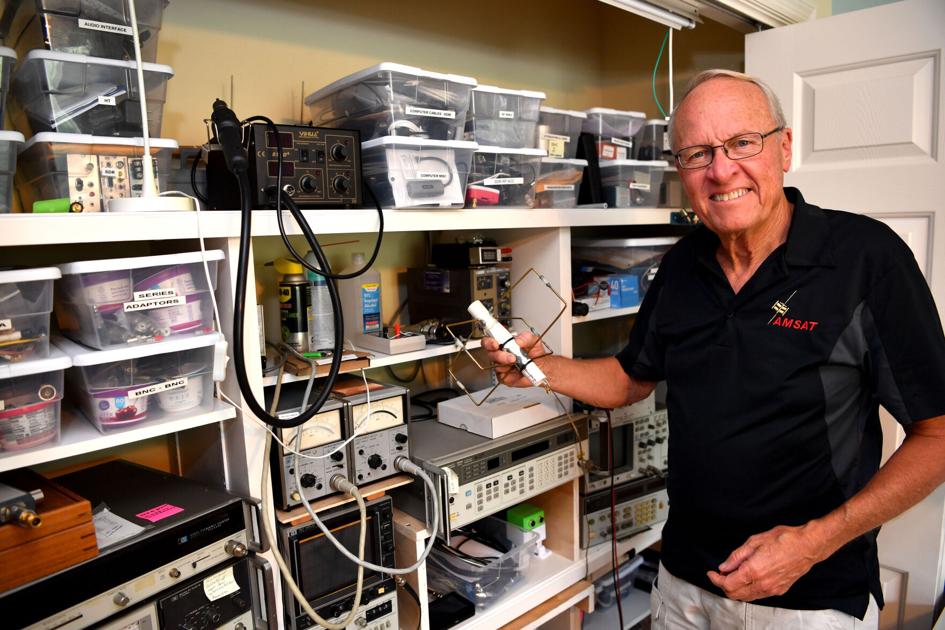Buffalo’s Fast Start Key To Rivalry Win - The Villages Daily Sun
Buffalo’s Fast Start Key To Rivalry Win - The Villages Daily Sun |
- Buffalo’s Fast Start Key To Rivalry Win - The Villages Daily Sun
- Villager Built Power Supply for Space Station - The Villages Daily Sun
- Daily Sun took away Sunday TV insert and isn't giving it back - Villages-News
| Buffalo’s Fast Start Key To Rivalry Win - The Villages Daily Sun Posted: 31 Oct 2020 07:52 AM PDT  There were no tricks pulled by The Villages High School football team Friday night. Just a whole lot of hard-earned treats. Behind a downhill run game and a precise passing attack, the Buffalo went right through rival Wildwood in a 40-26 road victory at Wildcat Field. VHS scored on its first five offensive possessions of the night and bowed up defensively late, collecting its third straight win in the series between the two neighboring schools. "All the credit goes to our kids. … I'm just so proud of this football team," Buffalo head coach Richard Pettus said after the win. "The fast start was the difference in the game, but our guys just kept fighting and they did what they had to do all night long for us." The 14th meeting between the Buffalo and Wildcats was the first in which both teams entered with unblemished records, as VHS (5-0 overall) remained unbeaten ahead of its regular-season finale next week against River Ridge (New Port Richey). Wildwood finishes its regular season at 7-1 overall — awaiting its Class 1A-Region 2 postseason opponent Nov. 13. Read this story and many others in Saturday's edition of the Daily Sun. |
| Villager Built Power Supply for Space Station - The Villages Daily Sun Posted: 31 Oct 2020 07:46 AM PDT  If you can communicate with an astronaut using an amateur radio, you can thank Ed Krome for it. Krome, a self-described experimenter and builder, was involved in creating what's known as a Multi-Voltage Power Supply, which is used to power a next-generation amateur radio system on the International Space Station. The first of four power supplies for this system launched March 6 as part of a SpaceX commercial supply mission to the space station. When he watched that rocket launch, Krome, of the Village of Amelia, thought it was awesome to have something he worked on go into space. "Going to the launch, it happened to be the clearest night ever over at (Cape) Canaveral, we could see the end of the fueling, the takeoff," he said. "It was just indescribable. Our little thing is in a bag somewhere in that rocket." Krome got involved in the making of these power supplies through Amateur Radio on the International Space Station (ARISS), a group run by volunteers from amateur radio organizations with a goal of linking amateur radio communication between Earth and the International Space Station. Their mission is to use amateur radio, also known as ham radio, to provide science, technology, engineering and math (STEM) education opportunities for students on Earth by allowing them to communicate with crew on the space station. Most recently, ARISS made contacts with the Ramona Lutheran Christian School in California on Oct. 14 and McConnell Middle School in Georgia on Oct. 7. Rosalie White, the ARISS U.S. delegate for the American Radio Relay League, said in a statement that the Multi-Voltage Power Supply will play a part in improving those opportunities. "A robust ham station is on its way to replace the broken radio on the ISS, and tens of thousands of hams will enjoy strong ARISS packet and ARISS SSTV signals as a result," she said. "In addition, thousands of students will discover and use ham radio to talk with a ham-astronaut." Krome, who spent his career as a mechanical engineer and is actively involved with the Radio Amateur Satellite Corporation, said he assisted in the power supply's design and finished the internal details. These new power supplies were designed to be universal, allowing compatibility with both the U.S. and Russian sides of the space station, he said. "They have different connectors and things can't be readily moved back and forth," Krome said. "So this is designed to be plugged in anywhere in the space station and power up these different projects." The main project is still in progress because only four of the 10 power supplies have been built so far, he said. Four will be installed at the International Space Station, two on the U.S. side and two on the Russian side, he said. One supply will serve as a primary source and the other as backup. Another four will be used for training purposes, also split between the U.S. and Russia, Krome said. The materials going to the U.S. will be used at Johnson Space Center in Houston. The remaining two will be flight identical units on Earth, which would be used to simulate issues that may come up onboard the space station, he said. Krome does not have any of the equipment he built at his home. It's shipped off to California for final assembly. But he's in regular contact with people from ARISS, recently sitting in on a teleconference about upcoming missions to the space station. This was the first time something Krome built went into space, he said. "We've seen launches before," he said, "but never one where I had something to do with it." |
| Daily Sun took away Sunday TV insert and isn't giving it back - Villages-News Posted: 30 Oct 2020 11:28 AM PDT  To the Editor: So disappointed to see The Villages Daily Sun TV insert is not back. Marlene Ward |
| You are subscribed to email updates from "dailysun" - Google News. To stop receiving these emails, you may unsubscribe now. | Email delivery powered by Google |
| Google, 1600 Amphitheatre Parkway, Mountain View, CA 94043, United States | |
Comments
Post a Comment